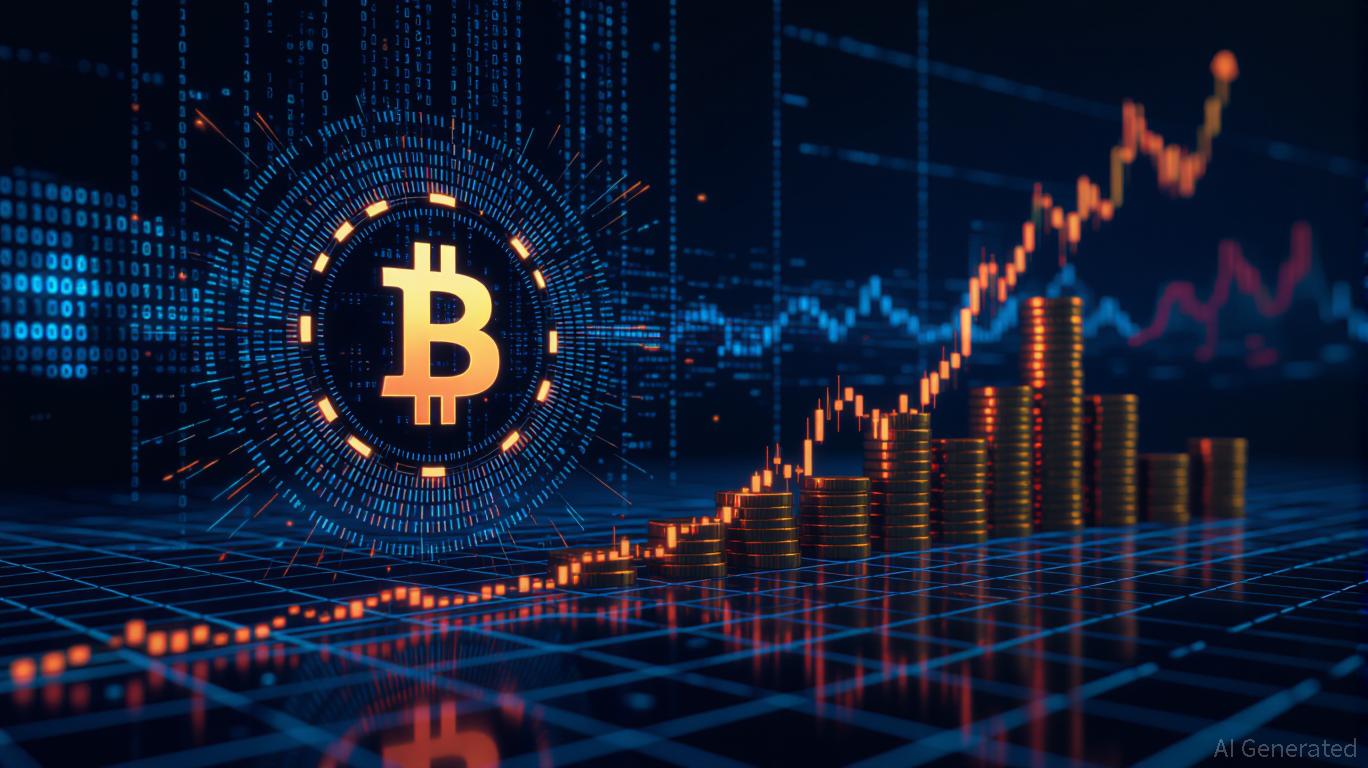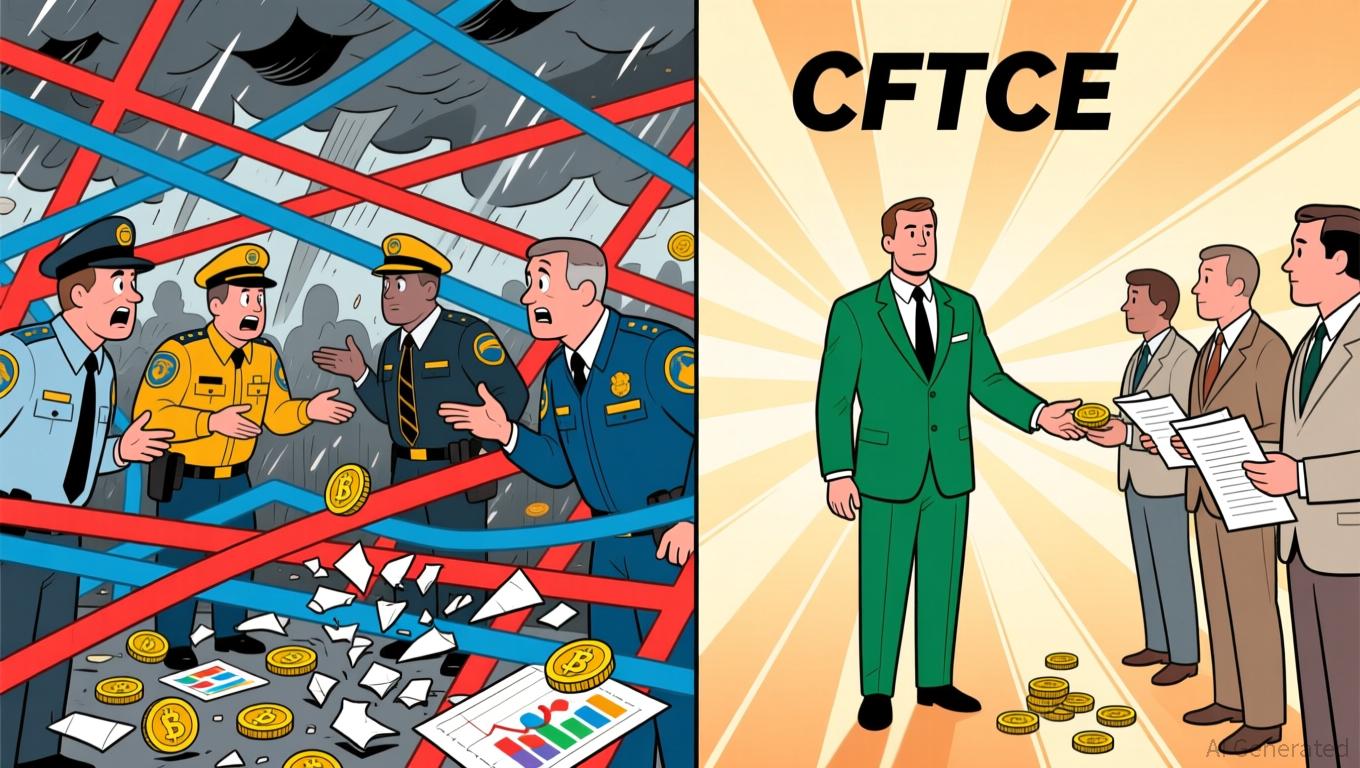Zcash Halving and Its Impact on Cryptocurrency Investors: Examining On-Chain Activity and Market Reactions After the Halving
- Zcash's 2024 halving reduced block rewards by 50%, tightening its deflationary supply model and lowering annual inflation to 4% by late 2025. - Despite muted initial price reactions, ZEC surged 92% by Q4 2025 driven by regulatory clarity, institutional adoption, and network upgrades. - Privacy-focused adoption grew significantly, with shielded transactions reaching 27% of activity in 2025, supported by user-friendly tools like Zashi and CrossPay. - Investor sentiment shifted from skepticism to strategic
How the 2024 Halving Worked and Its Effects on the Blockchain
The 2024 halving continued Zcash’s planned decrease in yearly inflation, which dropped from 12.5% in 2020 to just 4% by the end of 2025, according to a
Metrics like transaction volume and the number of active addresses also point to increasing adoption. By the end of 2025, shielded transactions—the core privacy feature of Zcash—made up 27% of all activity, a significant jump from almost none in 2023, as reported by a

Market Perception: From Doubt to Deliberate Adoption
Initially, the 2024 halving was met with doubt, as some questioned whether Zcash could mirror Bitcoin’s post-halving price surges. Yet, the delayed price rally—peaking in late 2025—signaled a change in investor mindset. Regulatory progress, such as the launch of the $137 million Grayscale Zcash Trust, lent institutional credibility, while Zcash’s distinctive features—like zero-knowledge proofs (zk-SNARKs) and a shrinking supply—appealed to privacy-oriented investors.
Analysis of social media conversations shows a clear shift before and after the halving. In 2024, discussions focused on Zcash’s technical strengths and privacy applications. By 2025, the conversation had moved to broader economic themes, with investors viewing Zcash as a safeguard against regulatory unpredictability and a way to diversify in turbulent crypto markets, as outlined in a
Investor Takeaways: Privacy as a Strategic Edge in a Divided Market
For those investing, the 2024 halving highlights Zcash’s promise as both a long-term value store and a utility-driven asset. Unlike Bitcoin’s focus on scarcity, Zcash offers a dual narrative: limited supply through halvings and practical use via shielded transactions. This combination is especially significant in 2025, as global regulators increase scrutiny on transparent blockchains.
Still, challenges persist. Lower miner profits could cause hash rate swings, particularly if PoS adoption is slow. Moreover, the outcome of the 2028 halving will depend on sustaining institutional interest and ongoing technical progress. Investors should consider these risks alongside Zcash’s expanding institutional backing and its place in a balanced crypto portfolio.
Summary
The 2024 Zcash halving was more than just a technical milestone—it sparked a transformation in both market outlook and blockchain activity. With a 92% price increase by late 2025, Zcash proved its ability to outperform standard crypto benchmarks in an era focused on privacy. For investors, the main message is this: Zcash’s rare mix of scarcity, privacy, and institutional support makes it a valuable asset in today’s fragmented digital currency market.
Disclaimer: The content of this article solely reflects the author's opinion and does not represent the platform in any capacity. This article is not intended to serve as a reference for making investment decisions.
You may also like
Bitcoin News Update: Trump's Pause on China Tariffs Triggers Worker Protests Over Future of U.S. Shipyards
- Trump administration suspends China tariffs on shipbuilding imports, drawing labor union criticism over domestic industry risks and worker refunds. - 175 H-1B visa abuse investigations reveal $15M+ potential refunds, as unions warn of wage suppression and corporate favoritism in trade policies. - Square enables Bitcoin payments for 4M U.S. merchants, advancing crypto adoption while Trump dismisses inflation concerns and vows meatpacking crackdowns.

Bipartisan Legislation Assigns Crypto Regulation to CFTC to Clarify Oversight Uncertainty
- U.S. lawmakers propose shifting crypto regulation from SEC to CFTC via a bipartisan bill, reclassifying most digital assets as commodities. - The draft aims to resolve regulatory ambiguity stifling innovation, building on stalled House CLARITY Act efforts during the 38-day government shutdown. - Market optimism surged as shutdown relief pushed Bitcoin above $105k, with ETF outflows persisting amid anticipation of clearer CFTC-led oversight. - Critics warn of CFTC resource constraints, while proponents hi

Solana News Update: DevvStream Invests in SOL Despite $11.8M Deficit, Shows Strong Confidence in Sustainable Blockchain Prospects
- DevvStream Corp. (DEVS) disclosed holding 12,185 SOL and 22.229 BTC, staking SOL for 6.29% annualized yield amid a $11.8M fiscal 2025 loss. - The company launched a digital asset treasury via BitGo/FRNT Financial, securing $10M liquidity from a $300M convertible note facility. - Plans include a 2026 tokenization platform for carbon credits and Solana staking, aligning with its de-SPAC/Nasdaq listing strategy. - Despite crypto market outflows, DevvStream's staked SOL attracted inflows, contrasting broader